Best Freeze Dried Meals For Backpacking 2024
Last Updated: March 9, 2024
Delicious & Nutritious Backpacking Freeze Dried Meals
You’re researching which are the best freeze dried meals for backpacking, and we’ve got recommendations! There have been lots of new brands and dietary options popping up in the freeze dried sector over the past decade, and this buyer’s guide highlights a few of our favorites. What’s more, you no longer have to settle for highly processed, salty, carb bombs. A plethora of natural, hearty, protein-dense, and veggie-rich options are available for all diets and taste preferences. Omnivore, vegetarian, vegan, keto, paleo… you’ve got it!
Our list is by no means exhaustive, but we’ve tried lots of backpacking meals and these brands have served us well. We’re currently working our way through lots of new entrees, so please join us in testing and let us know what you think!
Jump ahead to our pro tips section for buying and preparing freeze dried meals for backpacking. Check out or complete guide to backpacking food. And while you’re here, why not upgrade to a lightweight long handle spoon, stove, pot, backpacking knife, mug, water filter, and water bottle!
When purchasing through links on our site, we may earn an affiliate commission at no additional cost to you. Here’s why you can trust us.
Quick Picks For Backpacking Freeze Dried Meals
- Best All-Around: Peak Refuel
- Editor’s Choice: Right On Trek
- Best Value: Backpacker’s Pantry
- Best Vegan: Nomad Nutrition
- Best Keto: Next Mile Meals
- Best Gourmet: Bushka’s Kitchen
- Most Ethical: Farm to Summit
Best All-Around: Peak Refuel
Peak Refuel, based out of American Fork, UT, has really blown up lately; everyone is raving about this brand. And the hype is real. Their freeze dried meals are reasonably priced, but offer more protein and caloric density than nearly competitors. Every single entrée we’ve tried has been delicious, and we look forward to eating more of their excellent backpacking meals. For the combination of flavor, nutrition, and value, we award Peak Refuel the medal for “Best All-Around Freeze Dried Meal.”
- Price Per 2-Serving Meal: $13.95
- Our Favorite: Chicken Coconut Curry
- Pros: Delicious. Tons of protein. Calorically dense.
- Cons: Preservatives. Basic menu options.
Editor’s Choice: Right On Trek
Prepared in Kalispell, MT, Right On Trek‘s backpacking meals are a cut above in terms of closeness to fresh food. Unlike most, these meals require in-pot cooking, which is faster (albeit less fuel efficient) than hot soaking in the pouch. And speaking of packaging, these are made with 100% bio-based materials, 60% of which can be composted. We tested Right On Trek on the Mt. Rainier Wonderland trail to great success, relishing in every delicious dinner.
- Price Per 2 Serving Meal: $14.99
- Our Favorite: Broccoli Beef Stroganoff
- Pros: Delicious. Tons of protein. Calorically dense. Sustainable packaging. Fancy menu options.
- Cons: Requires in-pot cooking. Expensive.
Best Value: Backpacker’s Pantry
Backpacker’s Pantry, located in Boulder, CO, is the original gangster of freeze dried meals. Founded in 1971 with roots all the way back to the 50s, they’re still as relevant, available, and filling today as they were half a century ago. What’s more, BP is ethical, sustainable, and gives 1% for the Planet. “The company has become 100% solar powered, successfully offsets all carbon emissions from shipping, and plans to produce sustainable packaging in the near future.” Keep up the great work, Backpacker’s Pantry!
- Price Per 2 Serving Meal: $12.99
- Our Favorite: Pad Thai With Chicken
- Pros: Affordable. Reliable. Ethical company. Protein-rich. Readily available everywhere. Classic.
- Cons: Low Calorie. Basic menu options. Preservatives.
Best Vegan: Nomad Nutrition
Plant-based, freeze dried meals from Nomad Nutrition are manufactured without preservatives in Burnaby, BC, using exclusive REVdry technology to lock in flavors and extend shelf life without chemicals. These mostly-organic, mostly-vegan foods are seriously fancy too. Can we interest you in Hungarian Goulash, Irish Shepherd’s Pie, Caribbean Curry, or Indian Red Lentil Stew? Yes please!
- Price Per 1 Large Serving Meal: $13.50
- Our Favorite: Broccoli Beef Stroganoff
- Pros: Vegan. No preservatives. Fancy menu options. Cleanest ingredients.
- Cons: Low Calorie. Low protein. Expensive.
Best Keto: Next Mile Meals
Whether or not you’re actually on the keto diet, Next Mile Meals, based out of Bend, OR, has you covered with protein-rich, delicious, meat and veggie dinners with virtually no carbs. Most backpacking food is carby enough as-is, so let these hearty dinners nourish you without filler ingredients.
- Price Per 1 Large Serving Meal: $15.95
- Our Favorite: Italian Style Beef Marinara
- Pros: Keto. High Protein. No chemical preservatives. No filler ingredients.
- Cons: Very expensive. Basic menu options.
Best Gourmet: Bushka’s Kitchen
High quality, delicious, and interesting is how we would describe Bushka’s kitchen, located in San Francisco, CA. Nowhere else will you find premium freeze dried meats like wild boar or venison.
- Price Per 1 Large Serving Meal: $15.95
- Our Favorite: Hearty Harvest With Wild Boar
- Pros: Fancy menu options. No chemical preservatives. High protein.
- Cons: Very expensive.
Most Ethical: Farm To Summit
Farm to Summit dehydrated meals, located in Durango, CO, is a LGBTQ-owned backpacking meal company with veggie/vegan offerings to delight the tastebuds. What’s more, their packaging is entirely compostable, and 2% of profits go to decreasing food insecurity in the four-corners region. What a brand!
- Price Per 2 Serving Meal: $14.49
- Our Favorite: Green Chile Mac & Cheese
- Pros: Vegetarian. No chemical preservatives. Sustainable packaging. LGBTQ-owned.
- Cons: Low calorie, low protein.
Backpacking Meal Pro Tips & Buyer’s Advice
Advantages of Freeze Dried Meals for Backpackers
There are many advantages to choosing freeze dried meals for backpacking. They are delicious, relatively lightweight, require zero effort to prepare, are easy to cook in the backcountry, and require zero clean up. Freeze drying provides access to the world’s worth of options, flavors, textures, styles, and diets. There is significantly more variety than what any one home backpacking chef can create with their food dehydrator or bulk ingredients.
Disadvantages of Freeze Dried Meals for Backpackers
While there’s lots to love about the world of freeze dried meals for backpacking, there’s plenty to dislike as well. The following disadvantages are relative to homemade meals, such as those with a base of couscous, or instant rice and beans.
First and foremost, freeze dried meals are the most expensive way to dine in the backcountry. Most two-serving packet now costs upwards of $15 after tax, 2-3x the price of making your own. Deluxe premium meal packs with just one serving can be found for more than $15. And what’s more, they tend to be a bit heavier and bulkier than homemade meals, in part due to the boil bag pouches. Pouch bulk and the odd vacuum sealed shapes they take on wind up consuming lots of backpack volume. They can be difficult to fit in bear storage containers, and you may not have room for them on longer excursions. A final and minor disadvantage is rehydrating at altitude. Once over 10k feet, they can take over 20-30 minutes to rehydrate.
Caloric and Protein Density
When choosing which exact meal pouch to buy, you should factor in caloric density and protein. Traditionally, most freeze dried food was carb, fiber, and salt heavy, but lacked protein, fat, and vegetables. Less so now. A good baseline for a double serving pouch is 30-40g of protein, and 800-100 calories. You can find even heartier options, but we recommend avoiding lower calorie/protein options. For single serve bags, we recommend at least 500 calories with 600-700 being the sweet spot and 20-30g of protein. Vegetarian and vegan meals are likely lower on both protein and calories, so we highly recommend doctoring them up. See below.
How to Add Calories and Protein to Freeze Dried Backpacking Meals
Single portion or veggie/vegan freeze dried meals can help solve the bulk issue, but are rarely filling enough to satisfy the hungry hiker. A typical single-serve freeze dried meal averages about 400 calories. But dump in some fat and protein (olive oil, cheese, salami, powdered cream, peanut butter, bacon bits, soy protein, etc), and you might be able to stretch that into a full size meal. Doctored up properly, you could easily double or even triple the calories! In fact, you may want to do this anyway just for the flavor and texture benefits. Olive oil goes well on most foods, TBH.
The Advantages of Sharing A Freeze Dried Meal Bag
One of the biggest advantages to freeze dried meals is that you get food that is hot and varied in texture and flavor from most other dry backpacking foods. To alleviate the expensiveness and high volume bulk problems of freeze dried meals, consider sharing one meal pouch between you and your partner, enhancing it with denser and more affordable fats and proteins (see above) such that both hikers still get enough nourishment, while still enjoying the variety, flavor, and texture benefits of a warm freeze dried meal.
Double Serving vs Single Serving Sized Pouches
When choosing between double and single serving pouches, it depends on a lot of factors. Smaller bodies who tend to eat smaller than average volumes of food can get away with single serving pouches. But average or larger bodied people who consume average to large volumes of food should opt for the double serving size, and/or doctoring up their meal with extra fats and protein. Especially so on high mileage days.
Freeze Dried Breakfasts are a Low Priority
Freeze dried breakfasts can be a really nice treat. However, we generally prefer to avoid them and recommend against them for the following reason: 1. Dinners are a higher priority in terms of allocating food volume and budget. 2. If you don’t have enough budget to buy freeze dried dinners every night, definitely don’t buy breakfasts. 3. If you can barely fit all of your freeze dried meals in your bear can/bag, ditch the freeze dried breakfasts before the dinners. 4. There are far simpler and faster ways to prepare a hearty breakfast with less bulk, money, and time spent at camp waiting for food to rehydrate. 5. They require more fuel than cold breakfasts.
Pouring Slightly Too Much vs Slightly Too Little Water
It’s not always easy to measure the exact right amount of water to boil in the backcountry, which often results in meals that are under or over watered. Gross and unpleasant. Do your best to measure the right amount of water into your pot (identify the amount needed on the package and where that is in your pot). Make sure your pot is level. Then as you pour in water to the pot before boiling, add just a splash extra. It’s almost always better to err on the side of too much water than too little in case you need to add extra.
Since most freeze dried meals are wet, saucy foods to begin with, they can tolerate excess water more easily than not enough. On the other hand, spooning a dry, chalky section of an under-watered freeze dried meal is a textural nightmare. And in that vein, make sure to give it a really good stir before you seal it off to let your food rehydrate. Many brands recommend a bonus stir at the half way point, never a bad idea.
Backpacking Freeze Dried Meals Conclusion
We hope you’ve enjoyed this buyer’s guide to freeze dried meals for backpacking! There are so many good options for hungry hikers that you almost can’t go wrong. Even the most basic brands are evolving to create healthier and more nutritious options. Let us know which backpacking meals you like and what we should test next. Happy trails!

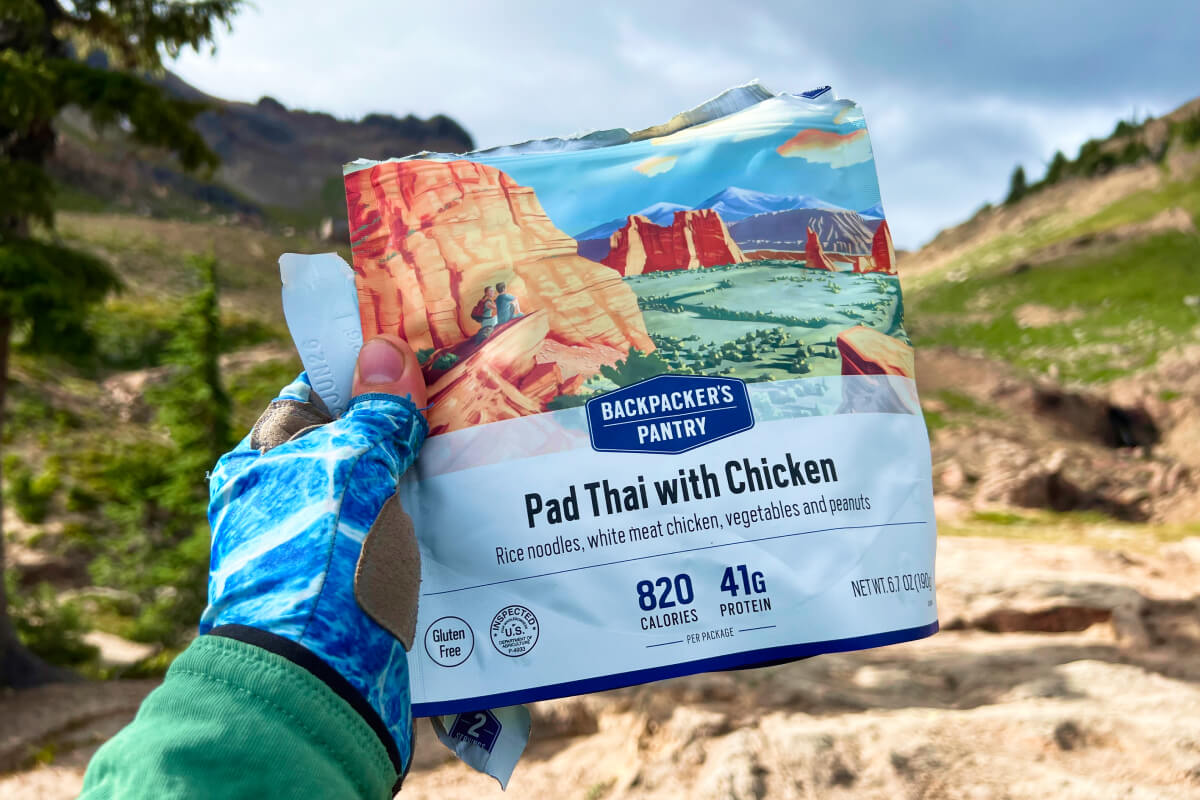
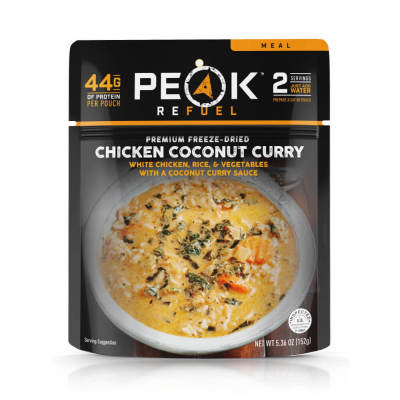
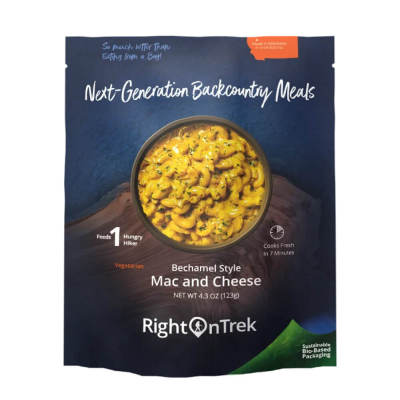
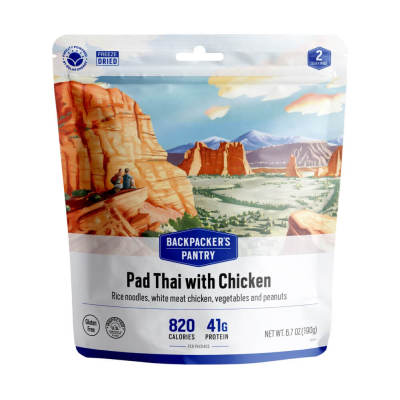
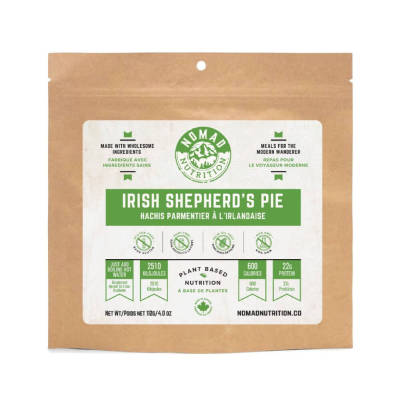
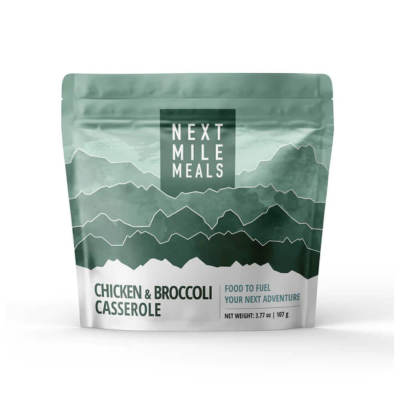
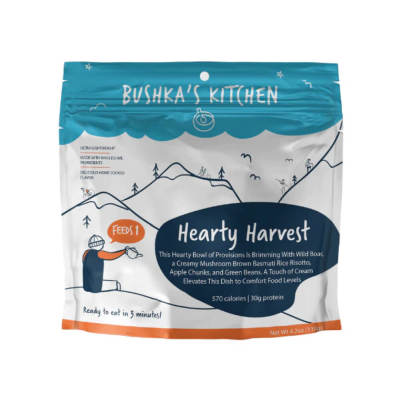
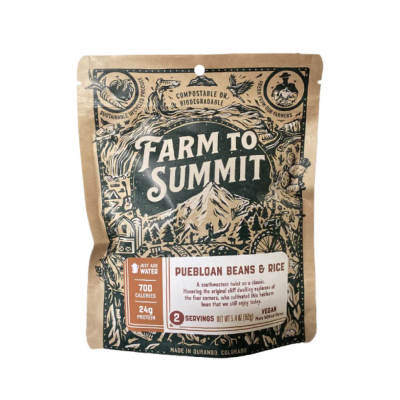
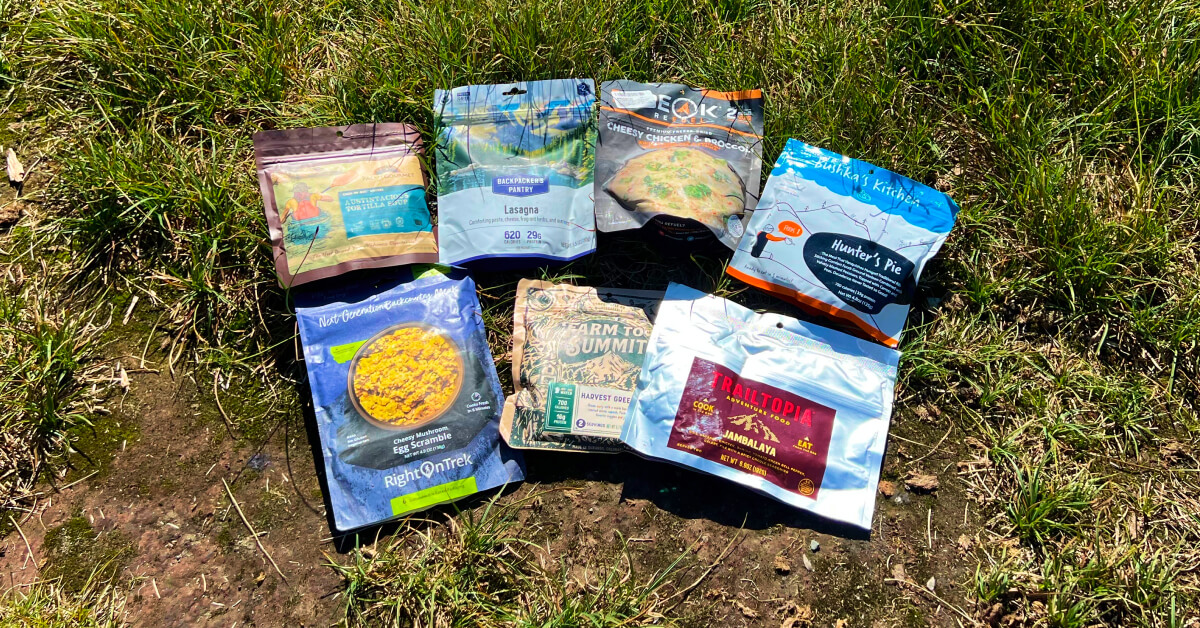
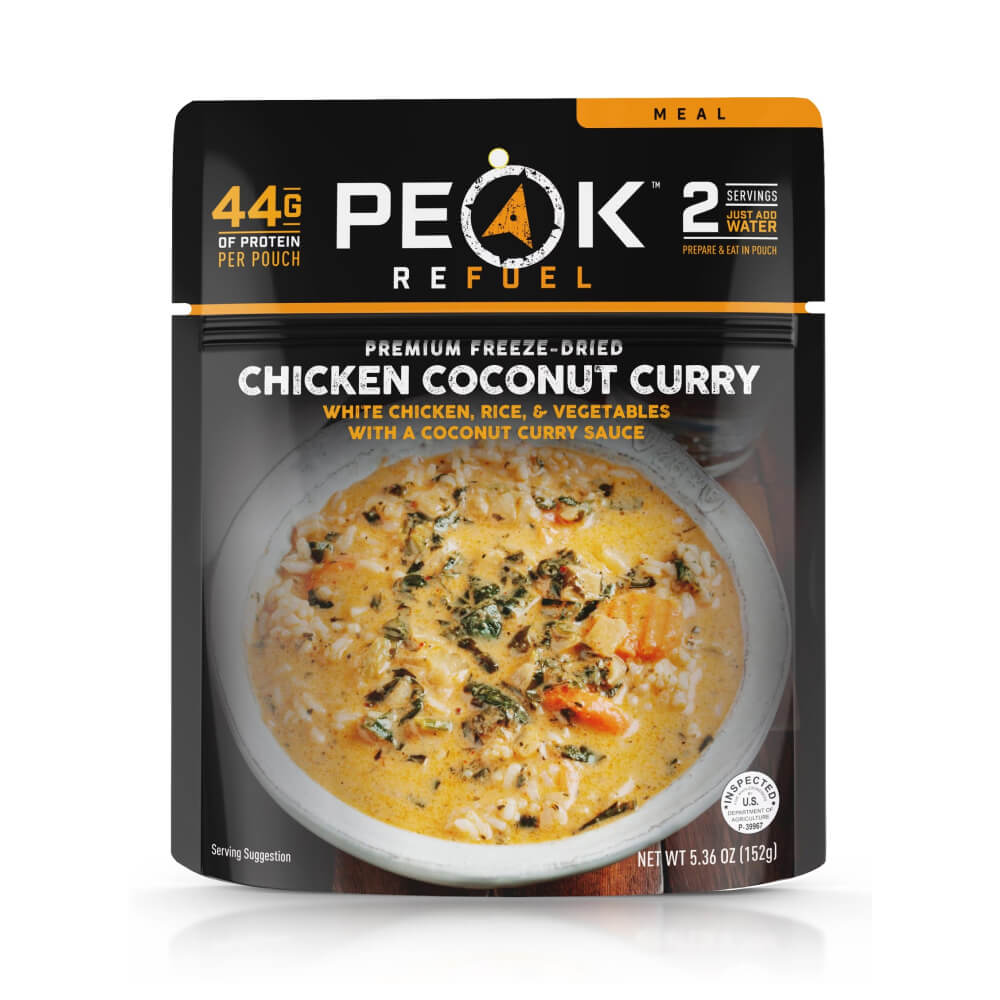
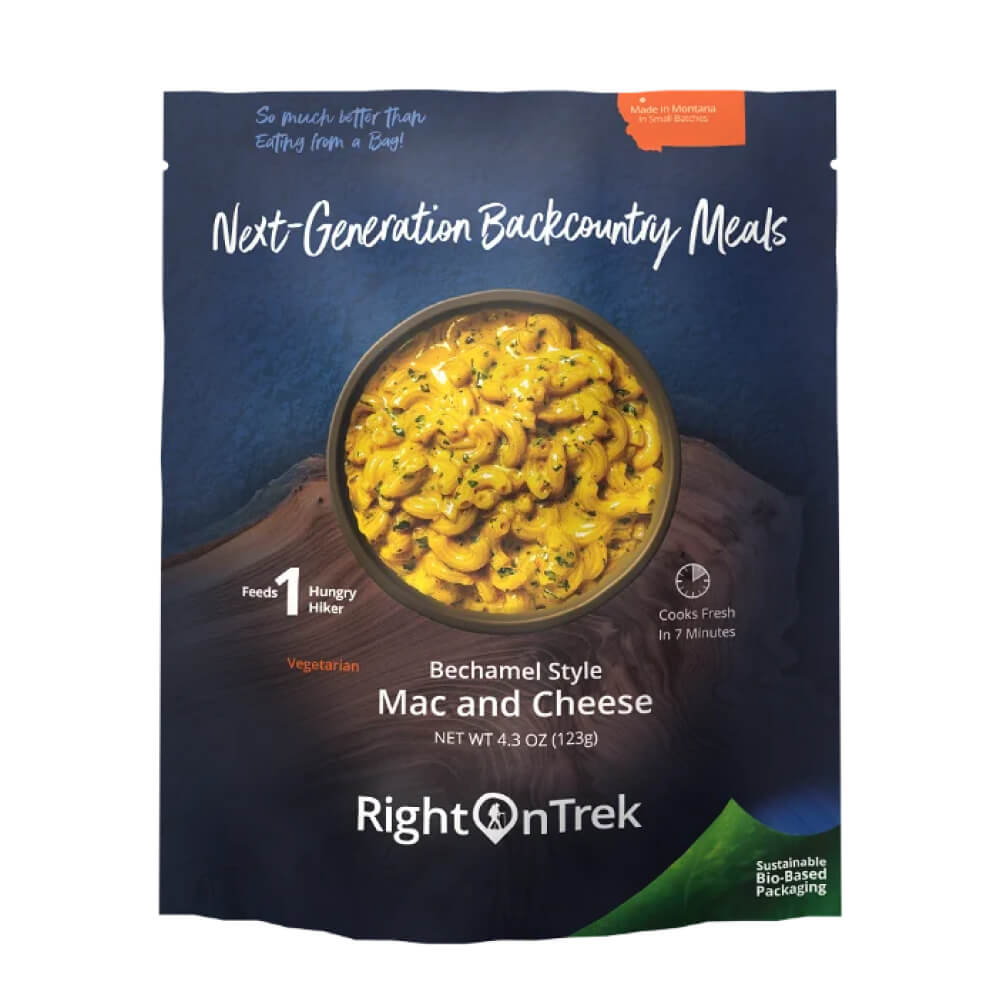
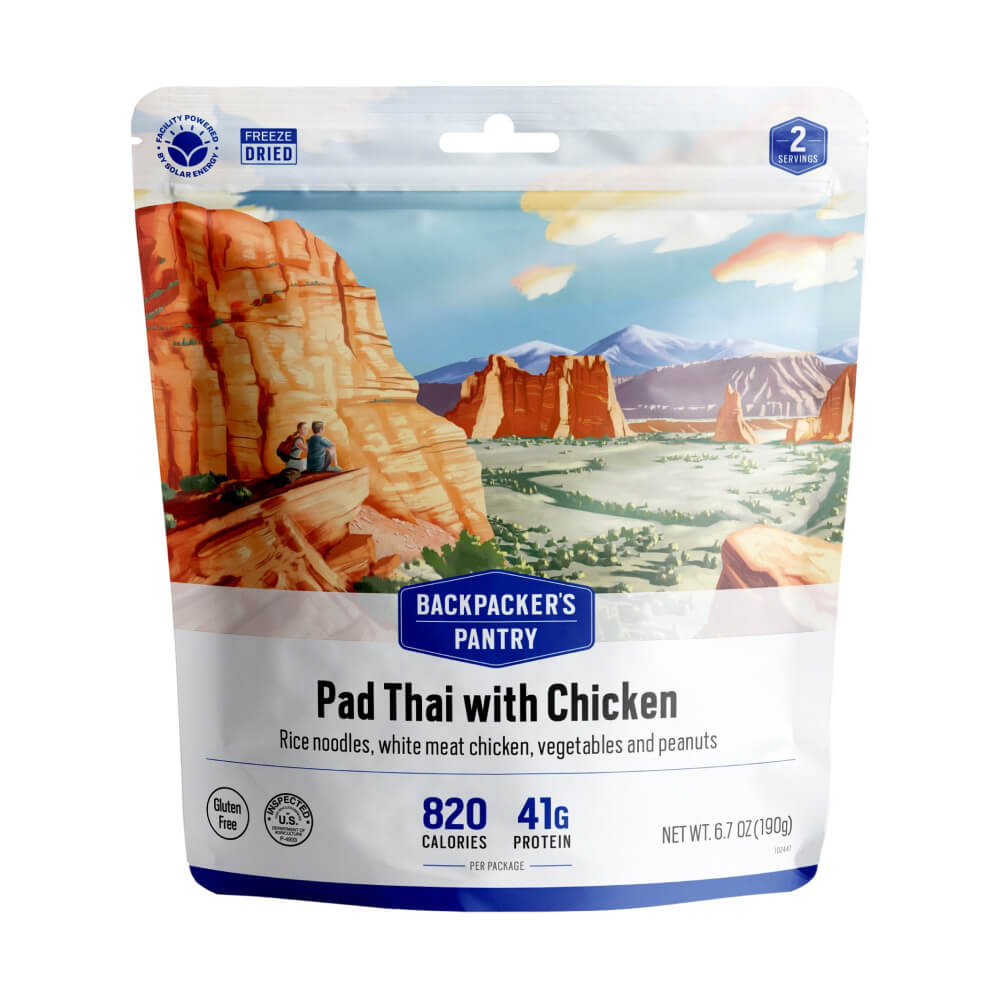
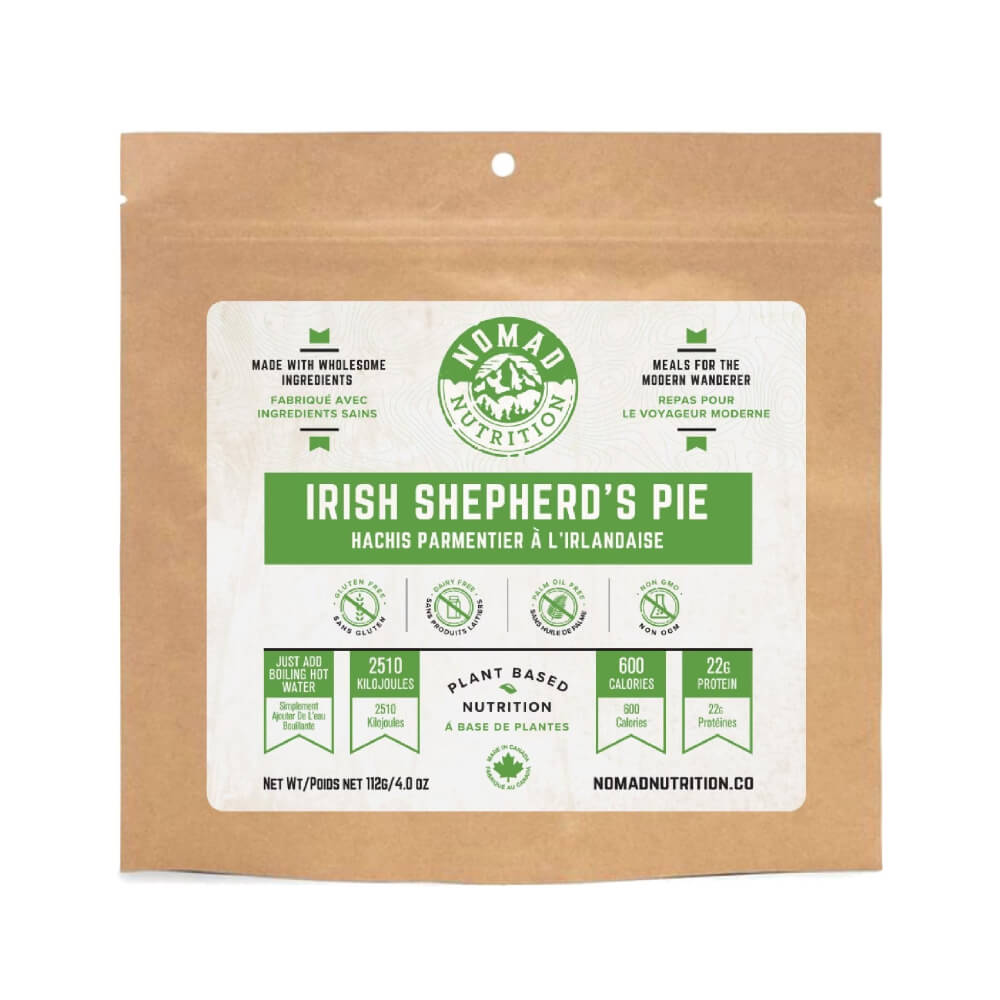
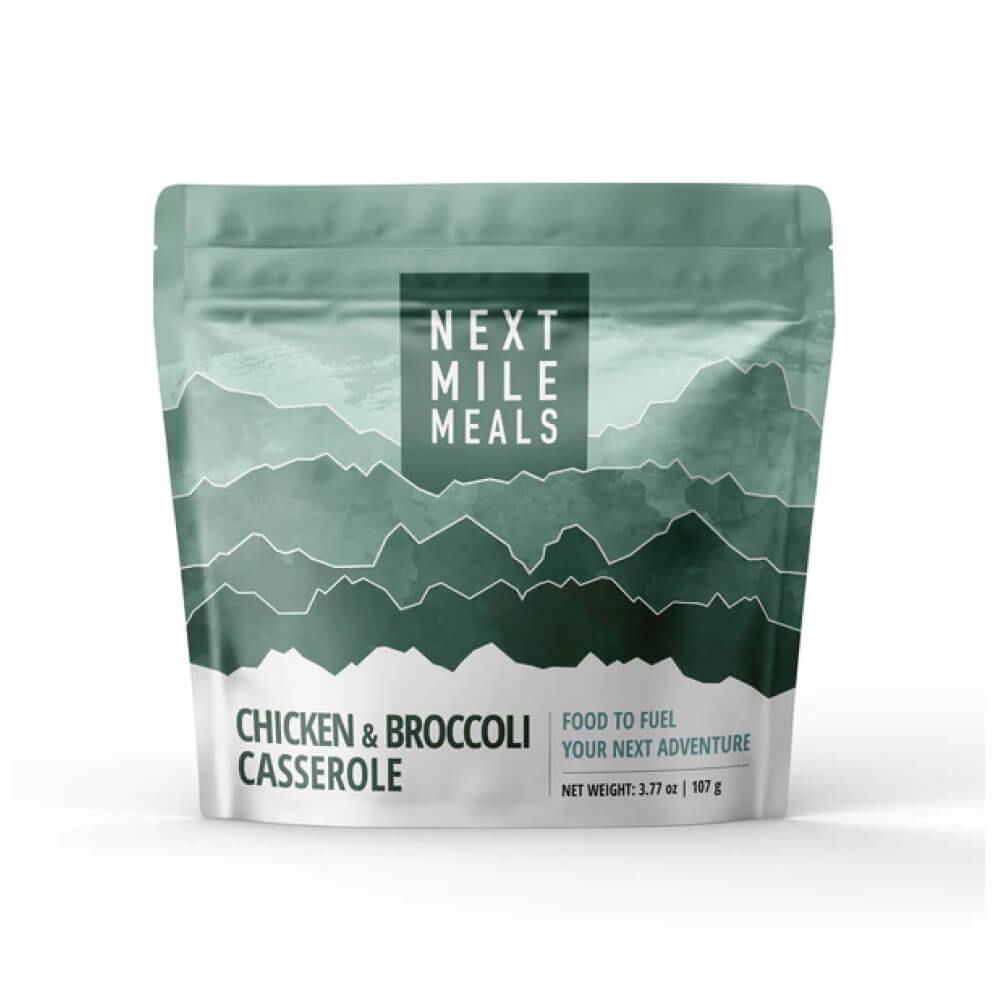
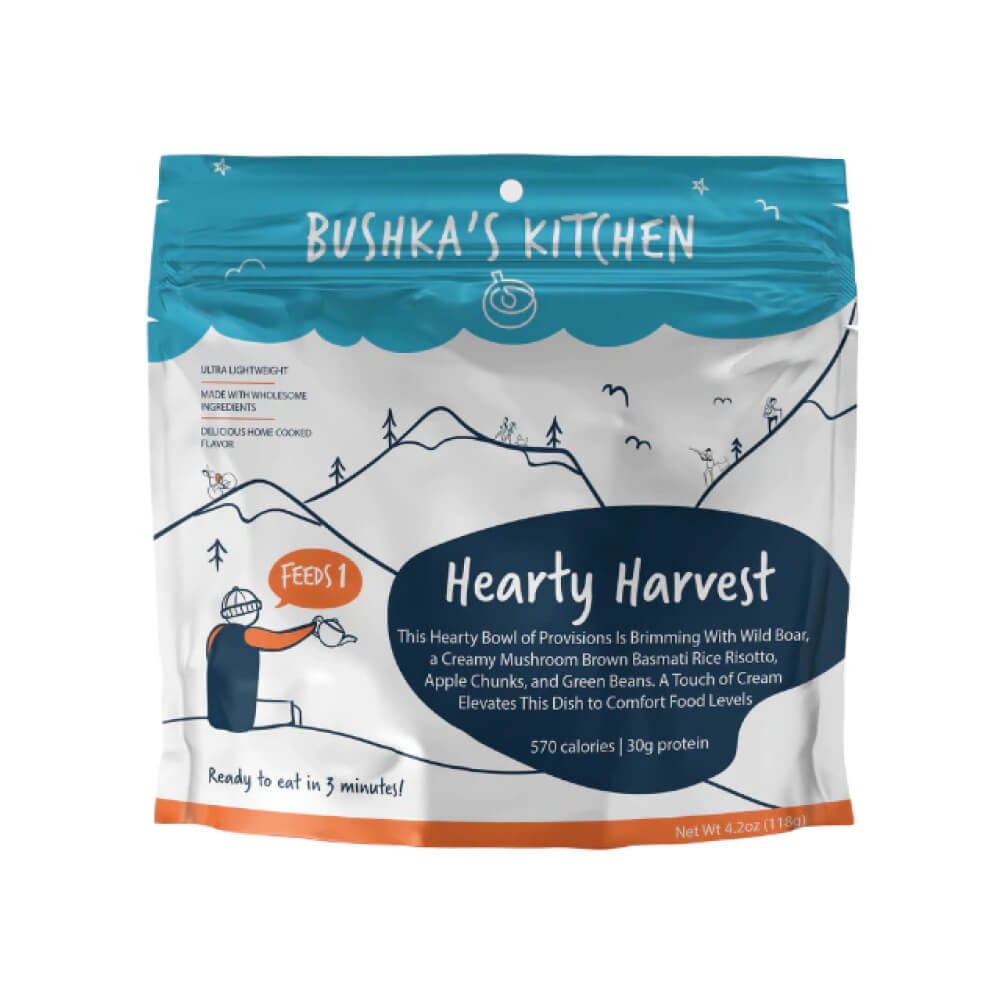
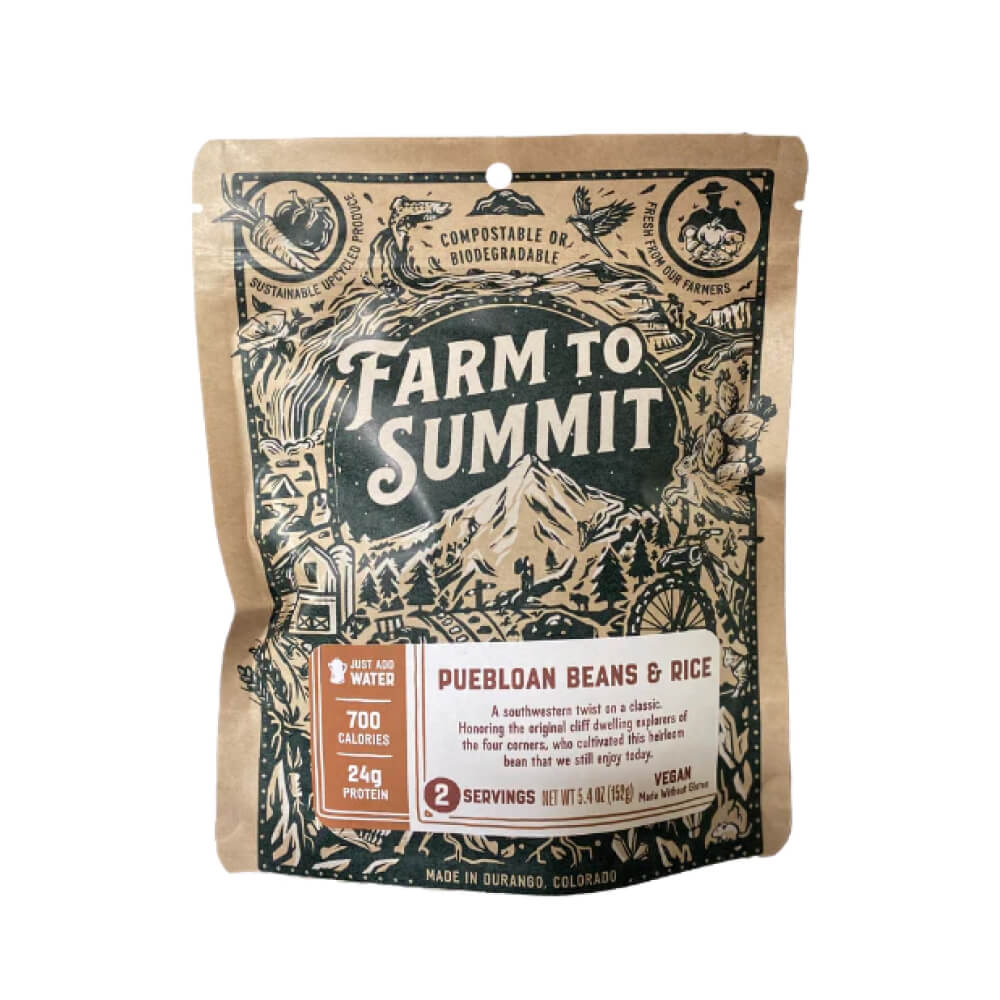
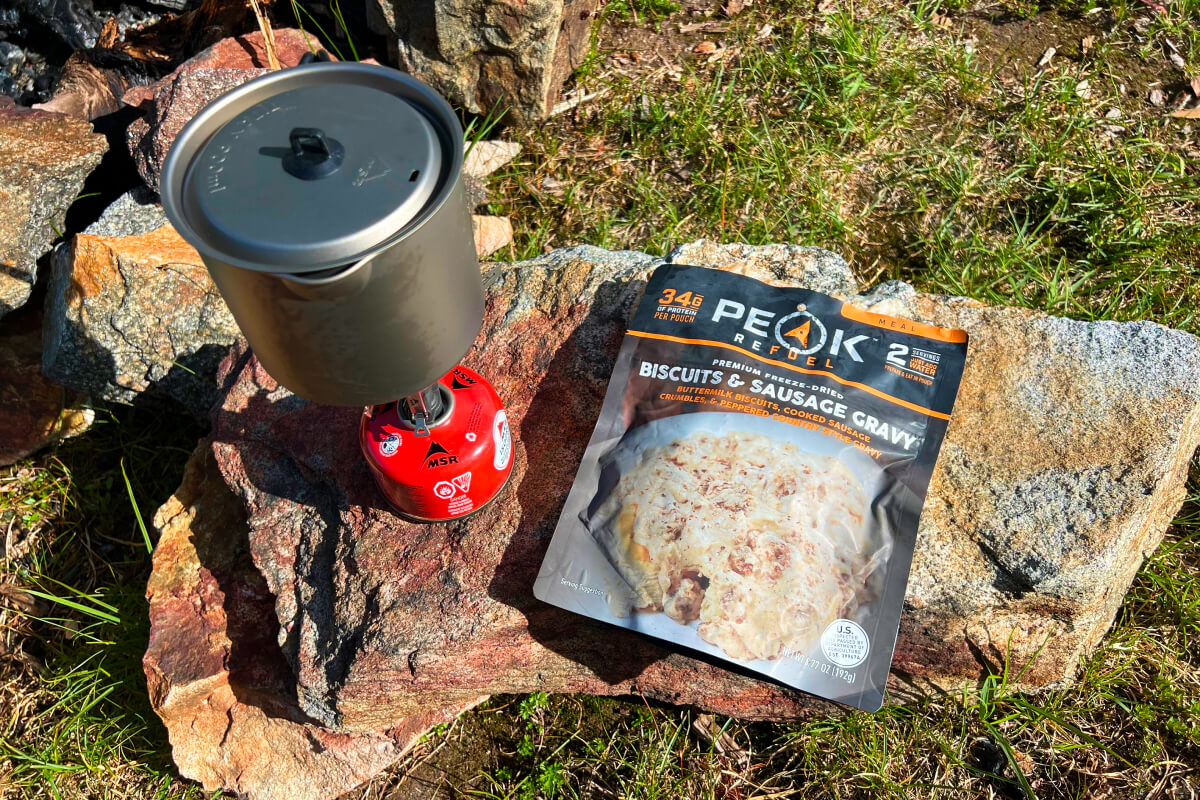


Share this entry